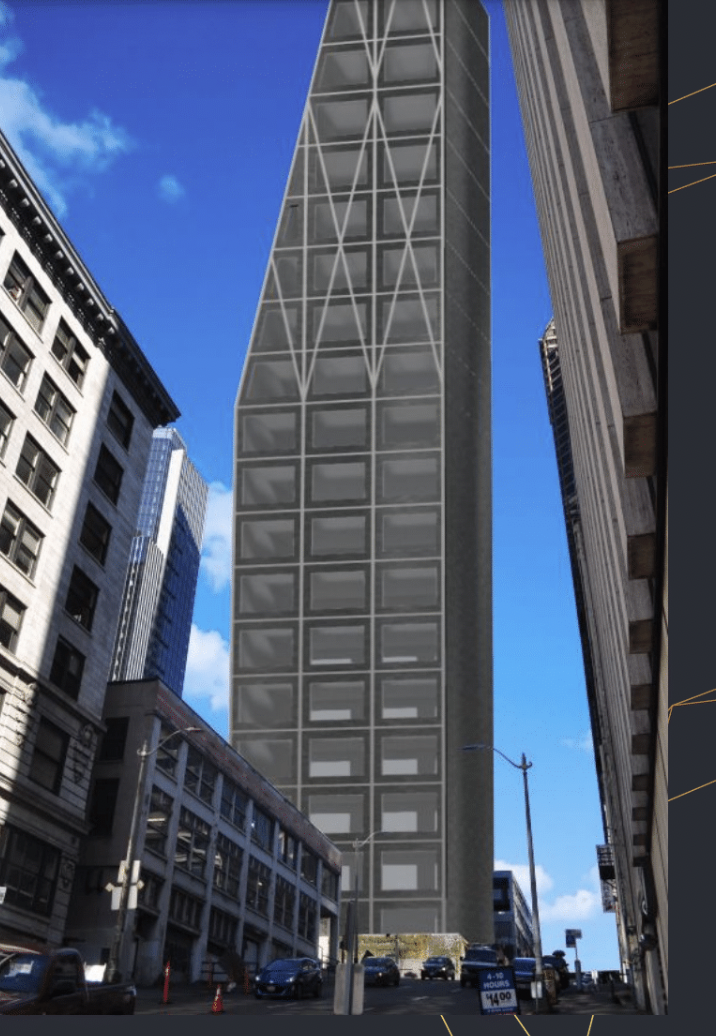Earthquake Engineering Research Institute (EERI) Competition
 Michigan Seismic has a large emphasis on multidisciplinary design, and the project involves the skills and knowledge of students from many backgrounds. The competition has two main components- the engineering design and architectural design. Although the competition itself is called the “Earthquake Engineering Research Institute,” every team must submit architectural renderings,, design concepts, and much more. The goal of our project is to design and construct a building that incorporates durable engineering components as well as making it an architecturally appealing design. Part of the competition abstract includes architectural constraints that we must keep in mind. For example, this year, the “buyer” wants a lot of natural light and green space and wants to incorporate the natural beauty of Utah into the design. The visual appeal of the building is also a huge scoring aspect of the project, so as a team we must be able to find a balance and collaborate to judge the trade off between visual appeal and structural durability.
Michigan Seismic has a large emphasis on multidisciplinary design, and the project involves the skills and knowledge of students from many backgrounds. The competition has two main components- the engineering design and architectural design. Although the competition itself is called the “Earthquake Engineering Research Institute,” every team must submit architectural renderings,, design concepts, and much more. The goal of our project is to design and construct a building that incorporates durable engineering components as well as making it an architecturally appealing design. Part of the competition abstract includes architectural constraints that we must keep in mind. For example, this year, the “buyer” wants a lot of natural light and green space and wants to incorporate the natural beauty of Utah into the design. The visual appeal of the building is also a huge scoring aspect of the project, so as a team we must be able to find a balance and collaborate to judge the trade off between visual appeal and structural durability.
This cross collaboration gives both engineers and architects the opportunity to look at the design from different perspectives. Being able to find a middle ground is a difficult to thing when you are usually focused on just one aspect in classes, so this team allows both types of students to apply what they learn in class to a real life application.In this project, we must first create a 3D model in SAP2000, make an architectural rendering, and then construct the building using balsa wood, wood glue, and other small parts. The physical design is the largest component of the competition, and in order to build it, we need funding to buy all necessary materials.
We have turned in the proposal for our design, and are one of 42 teams selected to compete in the competition in Salt Lake City, Utah, in June.
Michigan Seismic has a diverse member make up of civil, mechanical, and environmental engineers along with architecture students. The majority of members are civil engineering, as is expected due to the nature of the project. the diverse classes members have taken, as well as the cross-school collaboration, allows for a very efficient team that is able to take advantage of the many skills students have. One thing we must keep in mind during the competition is that some students have more experience in specific areas. Most engineering students do not have knowledge in architectural renderings, so the architecture students take the lead and walk us through the process. On the other hand, engineering students have more experience with SAP2000, so it is the other way around. Overall, this is a very collaborate project that places an emphasis on the combination of arts and engineering.
 Michigan Seismic has a large emphasis on multidisciplinary design, and the project involves the skills and knowledge of students from
Michigan Seismic has a large emphasis on multidisciplinary design, and the project involves the skills and knowledge of students from  Michigan Seismic has a large emphasis on multidisciplinary design, and the project involves the skills and knowledge of students from
Michigan Seismic has a large emphasis on multidisciplinary design, and the project involves the skills and knowledge of students from